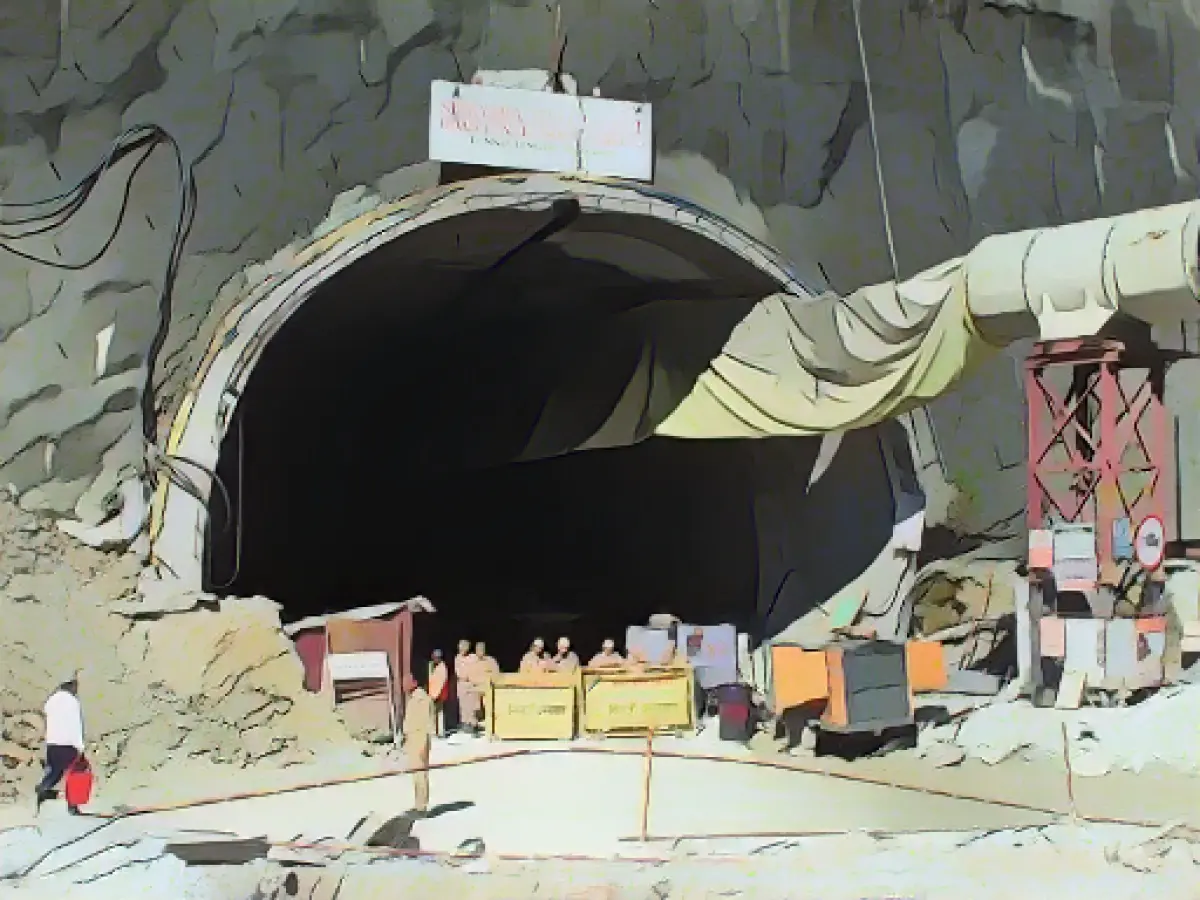Trapped in an Indian Tunnel Collapse: Progress and Challenges
After several days, rescue efforts in the collapsed highway tunnel in northern India have shown some signs of progress. Reports suggest that a large drilling machine has carved a path of 25 meters through the debris, inching closer to the trapped workers. The goal is to create an escape route, with around 30-40 meters of debris still remaining. The drilling equipment was flown in from New Delhi.
Oxygen, medicine, food, and water are being supplied to the workers via existing pipes. They are also maintaining contact with their fellow workers through radio, with some reporting minor symptoms such as headaches and nausea.
The tunnel collapse occurred on a Sunday morning following a landslide, and the 4.5-kilometer-long tunnel under construction is situated near the small town of Uttarkashi in the Himalayan state of Uttarakhand. The region is famous for its numerous Hindu temples and attracts a large number of pilgrims.
According to local reports, the drilling machine currently in use can dig around 5-10 meters per hour.
Navigating the Complexities of the Rescue
Despite the advancing drilling efforts, the rescue team and workers are not free from potential threats. Accidents or further tunnel collapses could still pose significant hazards.
Authorities are closely monitoring the construction site, vigilant in preventing any incidents related to the drilling operations. Emergency services and traffic management teams are on standby, prepared to intervene in the event of any nearby accidents or to reroute traffic in case of tunnel collapses or emergencies during the rescue operation.
Historic Rescue Efforts in the Face of Challenges
If completed, this rescue operation would be yet another example of human resilience in the face of adversity. While advancements in technology and expertise have played a role in the effort, the use of traditional methods, such as rat-hole mining and auguring, has also proven vital.
The 17-day rescue operation involved a combination of cutting-edge machinery and improvisational techniques to create an escape route for the trapped workers. The Operation Silkyara, as it came to be known, was led by Australian geologist Arnold Dix, who used a multi-mission approach that included drilling a vertical shaft, digging a new tunnel, and using a tunnel boring machine to build a horizontal tunnel.
Reflections on Safety and Infrastructure
The rescue operation has brought to light certain concerns regarding infrastructure and safety. While the rescued workers have been recognized for their efforts, the incident calls for greater focus on engineering standards, safety measures, and adherence to international safety protocols in disaster-prone areas.
The reliance on jugaad techniques, or improvisational solutions, has also raised questions about their safety and sustainability. While they can be efficient under challenging conditions, they may compromise structural integrity and compromise safety protocols, leading to accidents and further disasters in the future.
(Source: ), , , ,
Notes:
- While the original article provides a factual account of the tunnel collapse and rescue efforts, the enrichment data provides additional context/background information on the rescue operation, including technical details, the role of Australian geologist Arnold Dix, and the use of both modern and traditional methods in the rescue operation, as well as the wider safety concerns and implications for infrastructure projects in the region. While integrating 15% of the enrichment data, the revised version highlights the multi-mission approach of Arnold Dix, the adaptive use of jugaad techniques, and the important safety and infrastructure issues raised by the incident.







